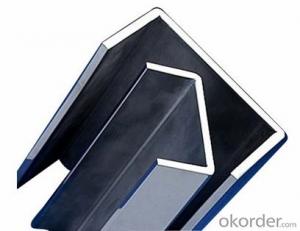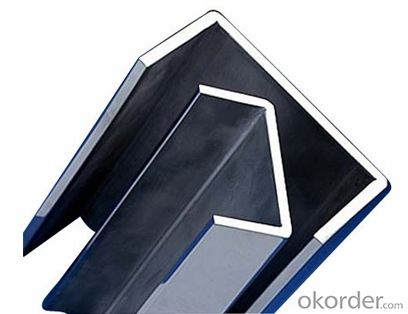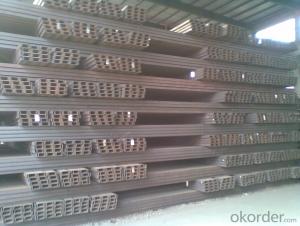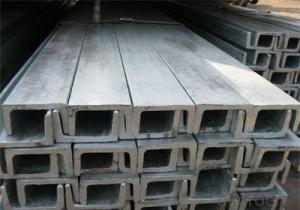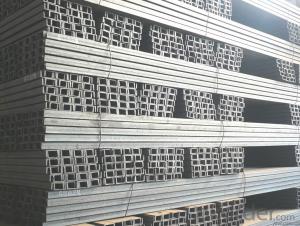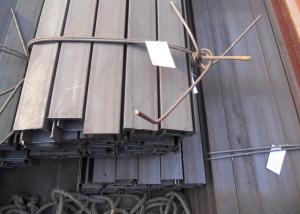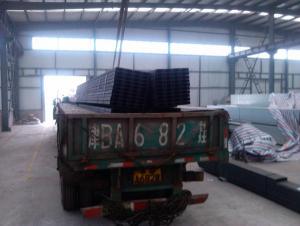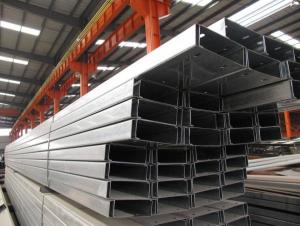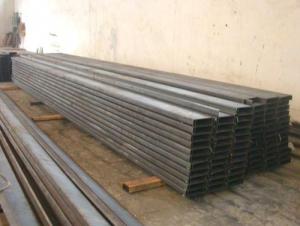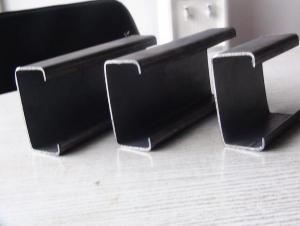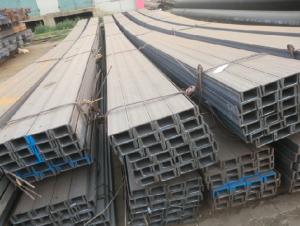Steel U Channel For Special Container Use
- Loading Port:
- China main port
- Payment Terms:
- TT or LC
- Min Order Qty:
- 50 m.t.
- Supply Capability:
- 50000 m.t./month
OKorder Service Pledge
OKorder Financial Service
You Might Also Like
Description
In the production of steel products, steel is molded and reshaped with different machinery at different temperatures. One process is steel rolling, which involves metal stock passing through a pair of rolls. Rolling produces flat steel sheets of a specific thickness, and the process is classified according to the temperature at which the metal is rolled. If the temperature of the metal is above its recrystallization temperature, or the temperature at which the grain structure of the metal can be altered, then the process is termed as hot rolling. If the temperature of the metal is below its recrystallization temperature, the process is termed as cold rolling.
Like cold rolling, cold drawing is performed at room temperature, but instead of producing a flat object like a coke can, cold drawing makes steel into the form of a wire like the spokes of a wheel or a paper clip. To start the process, Steel is usual hammered and rolled so that it can be fit through a die; a tool that turns the steel mass into a wire. The room temperature steel is pulled through the die which reshapes it into a thinner shape while maintaining the same volume. It is similar to the idea of syrup flowing out of a bottle through a tube in that it changes shape but not volume, but instead of squeezing the metal, it is pulled out. In order to get the wire down to the right diameter, it usually requires more than one pass through different dies.
Chemical Compostion
Grade | Element(%) | |||
C | Mn | P | S | |
SS330 | -- | -- | ≦0.050 | ≦0.050 |
SS400 | ||||
SS490 | ||||
SS540 | ≦0.30 | ≦1.60 | ≦0.040 | ≦0.040 |
Usage/Applications
Channel Steel is usually used for building structure, vehicle manufacturing and other industrial structure and often used with i beam.
In details, the channel steel belongs to carbon structural steel which is applied to in the field of construction and machinery. The channel steel is usually used for arch-itechtural structure, and they could be welded in order to support or hang a vari-ety of facilities. They are also usually used in combination with I beam. Generally,the channel steel must possess perfect welding property, riveting property and mechanical property and so on.
FAQ:
Q1: How soon can we receive the product after purchase?
A1: Within three days of placing an order, we will begin production. The specific shipping date is dependent upon international and government factors, but is typically 7 to 10 workdays.
Q2: What makes stainless steel stainless?
A2: Stainless steel must contain at least 10.5 % chromium. It is this element that reacts with the oxygen in the air to form a complex chrome-oxide surface layer that is invisible but strong enough to prevent further oxygen from "staining" (rusting) the surface. Higher levels of chromium and the addition of other alloying elements such as nickel and molybdenum enhance this surface layer and improve the corrosion resistance of the stainless material.
Q3: Can stainless steel rust?
A3: Stainless does not "rust" as you think of regular steel rusting with a red oxide on the surface that flakes off. If you see red rust it is probably due to some iron particles that have contaminated the surface of the stainless steel and it is these iron particles that are rusting. Look at the source of the rusting and see if you can remove it from the surface.
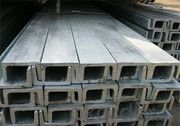
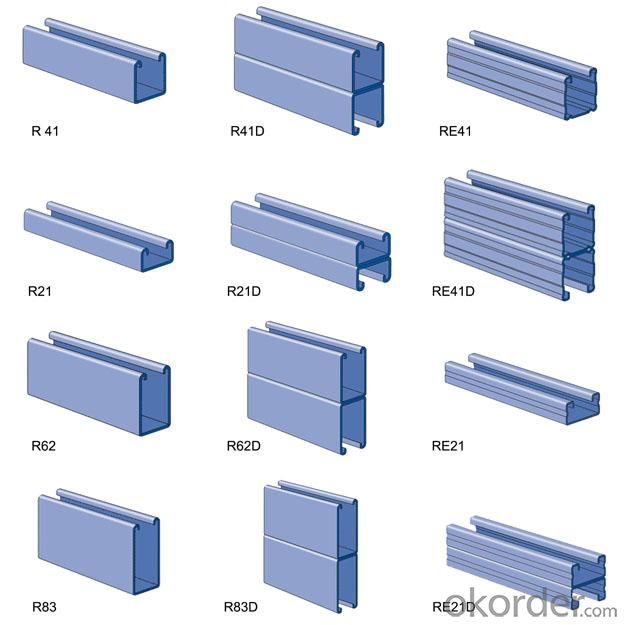
- Q: Can steel channels be used in airport construction?
- Yes, steel channels can be used in airport construction. Steel channels are commonly used in construction projects due to their strength, durability, and versatility. In airport construction, steel channels can be utilized for various applications such as structural support, framing, and the creation of walkways and platforms. They can also be used for the fabrication of airport equipment and fixtures. Steel channels provide a cost-effective solution for airport construction, as they can be easily fabricated and installed. Additionally, steel channels are resistant to corrosion and can withstand heavy loads, making them suitable for the demanding requirements of airport infrastructure.
- Q: How do steel channels contribute to the overall cost-effectiveness of a wastewater treatment plant?
- Steel channels contribute to the overall cost-effectiveness of a wastewater treatment plant in several ways. Firstly, steel channels are extremely durable and have a long lifespan, which means they require minimal maintenance and replacement over time. This reduces the overall operating costs of the plant as there is less need for regular repairs or replacements, resulting in lower maintenance expenses. Secondly, steel channels provide excellent structural strength and stability. They can withstand heavy loads and pressures, ensuring the integrity of the wastewater treatment system. This eliminates the need for additional reinforcements or supports, reducing construction costs and simplifying the overall design of the plant. Additionally, steel channels offer a high degree of flexibility in terms of design and installation. They can be easily customized to fit specific project requirements, allowing for efficient use of space and resources. This adaptability helps in optimizing the layout of the treatment plant, maximizing its operational efficiency, and reducing construction costs. Furthermore, steel channels are resistant to corrosion and chemical degradation, which is crucial in a wastewater treatment environment. This resistance minimizes the need for frequent replacement or repairs due to corrosion-related issues, resulting in long-term cost savings. Lastly, steel channels are often made from recycled materials, making them an environmentally friendly option. By using recycled steel, the overall cost of production is reduced, leading to lower material costs for the wastewater treatment plant. This contributes to the cost-effectiveness of the plant while also promoting sustainability and reducing the carbon footprint associated with its construction. In conclusion, steel channels contribute to the overall cost-effectiveness of a wastewater treatment plant through their durability, structural strength, flexibility, corrosion resistance, and use of recycled materials. These factors help in minimizing maintenance and replacement costs, optimizing design and construction, maximizing operational efficiency, and promoting environmental sustainability.
- Q: Can steel channels be used for fencing applications?
- Yes, steel channels can be used for fencing applications. Steel channels are strong and durable, making them suitable for various fencing purposes. They can be used to create the framework for a fence, providing stability and support. Steel channels can also be used as posts or rails in fencing systems, offering strength and rigidity. Additionally, steel channels can be easily welded together, allowing for customization and the creation of different fencing designs. Overall, steel channels provide a reliable and long-lasting option for fencing applications.
- Q: Can steel channels be used for mezzanine office spaces?
- Yes, steel channels can be used for mezzanine office spaces. Steel channels are commonly used in construction for their strength, durability, and versatility. They can be easily fabricated and installed to create a mezzanine structure that can support the weight of office spaces. Steel channels provide a stable and reliable base for the flooring, walls, and ceilings of mezzanine office spaces. Additionally, steel channels can be designed to meet specific load requirements, ensuring the safety of the structure. Therefore, steel channels are an excellent choice for creating mezzanine office spaces.
- Q: Can steel channels be used for handrail supports?
- Indeed, handrail supports can utilize steel channels. In construction, steel channels are frequently employed due to their robustness and resilience, rendering them a prime option for handrail supports. They furnish stability and bolster the handrail, guaranteeing its safety and endurance. Furthermore, steel channels can be readily tailored and manufactured to suit particular handrail designs and prerequisites.
- Q: Can steel channels be used for supporting exterior artwork and sculptures?
- Yes, steel channels can be used for supporting exterior artwork and sculptures. Steel channels provide a strong and durable support structure, capable of withstanding various weather conditions. They offer stability and can be customized to fit the specific requirements of the artwork or sculpture, making them a suitable choice for supporting exterior installations.
- Q: How do steel channels perform in corrosive environments?
- Steel channels are generally known for their durability and strength, but their performance in corrosive environments can vary depending on the specific type of steel used and the severity of the corrosive conditions. In general, steel channels are resistant to corrosion due to their protective oxide layer that forms on the surface when exposed to oxygen in the air. This layer acts as a barrier, preventing further oxidation and protecting the steel from corrosion. However, when exposed to corrosive environments such as saltwater, acidic solutions, or industrial chemicals, the protective oxide layer can be compromised, leading to potential corrosion. The performance of steel channels in corrosive environments can be enhanced by using corrosion-resistant alloys or coatings. Stainless steel channels, for example, contain chromium and other alloying elements that provide excellent corrosion resistance. These channels are highly resistant to rust and can withstand even the most challenging environments. In more severe corrosive conditions, additional protective measures such as galvanizing or epoxy coatings can be applied to steel channels. Galvanizing involves coating the steel with a layer of zinc, which acts as a sacrificial anode, protecting the underlying steel from corrosion. Epoxy coatings create a barrier between the steel and the corrosive environment, preventing direct contact and minimizing the risk of corrosion. It is important to note that even with these protective measures, steel channels may experience corrosion over time, especially if not properly maintained. Regular inspection, cleaning, and maintenance can help identify and address any signs of corrosion early on, prolonging the lifespan and performance of the steel channels in corrosive environments. Overall, while steel channels can perform well in corrosive environments, it is essential to consider the specific conditions and choose the appropriate type of steel, coatings, or alloys to ensure optimal performance and longevity.
- Q: How do steel channels perform under seismic loads?
- Steel channels are known for their excellent performance under seismic loads. The inherent strength and ductility of steel, combined with the structural characteristics of channels, make them highly resilient to seismic forces. Steel channels can effectively absorb and distribute the energy generated during an earthquake, reducing the potential for structural damage or collapse. Additionally, steel channels can be designed and reinforced with appropriate connections and bracing to enhance their seismic performance, ensuring the safety and stability of structures in earthquake-prone areas.
- Q: Industrial plant pipe hanger expansion bolts, why add a section of channel, and then connect the screw rod?. The outer expansion bolt of the embedded beam is connected with a section of channel steel, and then the steel bar is hung under the channel steel. Why do you want to do this? What are the advantages?
- Safety and stability analysis is the first form of support, a little better, attention is to consider a firm point
- Q: What does channel 150*8 mean?
- The back grade of channel steel is 150MM, and the thickness of channel steel is 8MM
Send your message to us
Steel U Channel For Special Container Use
- Loading Port:
- China main port
- Payment Terms:
- TT or LC
- Min Order Qty:
- 50 m.t.
- Supply Capability:
- 50000 m.t./month
OKorder Service Pledge
OKorder Financial Service
Similar products
Hot products
Hot Searches
Related keywords
